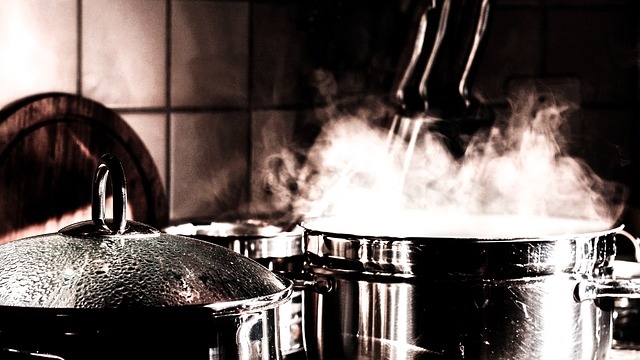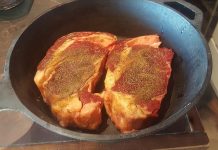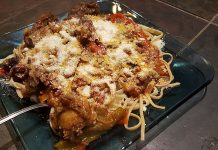Trying to live as self-sufficient as possible is a challenge for a lot of people in today’s modern world. There are many skills that have diminished over just the last century, and people have to invest the time and money to gain those abilities back. The knowledge of how to cook a meal from scratch is one of those skill-sets that has been lost.
There are many different food options today that are readily available, sadly most people rely on these modern day conveniences as their “go to” meals, rather than taking the time to prepare something themselves. This way of thinking has created an entire generation that have no idea where to even begin when it comes to a kitchen; unless it involves a box and a microwave.
Staple foods are the most important items in homesteading and survival situations. They are easy to store, won’t go bad quickly, have a high caloric/nutritional value, and are simple to prepare. For example; potatoes, sweet potatoes, whole grains, split peas, beans, and rice; these meet all of the qualifications. Learning how to use these ingredients in a variety of methods will allow you to prepare a simple and tasty meal that will keep you going when times get rough.
Another benefit of preparing your own food is cost savings. Buying basic food staples is significantly cheaper than buying processed products from the grocers. The cost of making a loaf of bread from scratch is a fraction of the price of a store bough loaf, and in today’s economy; every penny counts. If you are able to grow a garden; the savings is even greater.
I value bread the most out of all the foods and the reason for this is simple; you only need two ingredients; flour and water. Some breads like Bannock don’t utilize yeast at all! Stored properly, flour keeps for a very long time. There are even modern methods of preservation that can allow you to store wheat berries, oats, barley or flour of any type indefinitely. Bread is not only edible and carbohydrate rich, but easily bartered as well.
Here are a few recipes that I like to make and are relatively simple. Feel free to try them out and change them to suit your tastes.
TRADITIONAL WHITE BREAD
Ingredients
2 (.25 ounce) packages active dry yeast
3 tablespoons white sugar
2 1/2 cups warm water (110 degrees F/45 degrees C)
3 tablespoons lard, softened
1 tablespoon salt
6 1/2 cups bread flour
Directions
In a large bowl, dissolve yeast and sugar in warm water. Stir in lard, salt and two cups of the flour. Stir in the remaining flour, 1/2 cup at a time, beating well after each addition. When the dough has pulled together, turn it out onto a lightly floured surface and knead until smooth and elastic, about 8 minutes.
Lightly oil a large bowl, place the dough in the bowl and turn to coat with oil. Cover with a damp cloth and let rise in a warm place until doubled in volume, about 1 hour.
Deflate the dough and turn it out onto a lightly floured surface. Divide the dough into two equal pieces and form into loaves. Place the loaves into two lightly greased 9×5 inch loaf pans. Cover the loaves with a damp cloth and let rise until doubled in volume, about 40 minutes.
Preheat oven to 425 degrees F (220 degrees C).
Bake at 375 degrees F (190 degrees C) for about 30 minutes or until the top is golden brown and the bottom of the loaf sounds hollow when tapped.
SPLIT PEA SOUP
Ingredients
2 1/4 cups dried split peas
2 quarts cold water
3-6 slices of bacon, sliced into thirds
2 onions, thinly sliced
1/2 teaspoon salt
1/4 teaspoon ground black pepper
1 bay leaf
3 stalks celery, chopped
3 carrots, chopped
1 potato, diced
Directions
In a large stock pot, cover peas with 2 quarts cold water and soak overnight. If you need a faster method, simmer the peas gently for 2 minutes, and then soak for l hour.
Once peas are soaked, add ham bone, onion, salt, pepper and bay leaf. Cover, bring to boil and then simmer for 1 1/2 hours, stirring occasionally.
In a separate pot, boil the carrots for 15 minutes, drain off the water and transfer into the soup pot.
Add celery, carrots and potatoes. At this point, I remove the meat and cut off the fat, then re-introduce the meat. If you like the fat, feel free to leave it on.
Cook slowly, uncovered for 30 to 40 minutes, or until vegetables are tender.
BANNOCK
For this recipe, I have to use a video, since it’s where I got the recipe! It’s a great demonstration of how you can use a few simple ingredients to make something nice and hearty, but also tasty in the great outdoors!
The most important thing when starting out is to not be afraid to make a mistake or try new things. Most of the time, if you start with a recipe and follow it exactly you should be successful. From there introduce new things to suit your tastes. You may have some failures, but don’t get discouraged by them, learn from the mistake and try again! Above all else make things you like. That way you’ll enjoy eating your final result!
Here is an excellent cookbook to help you on your path of culinary discovery that you can download here.





